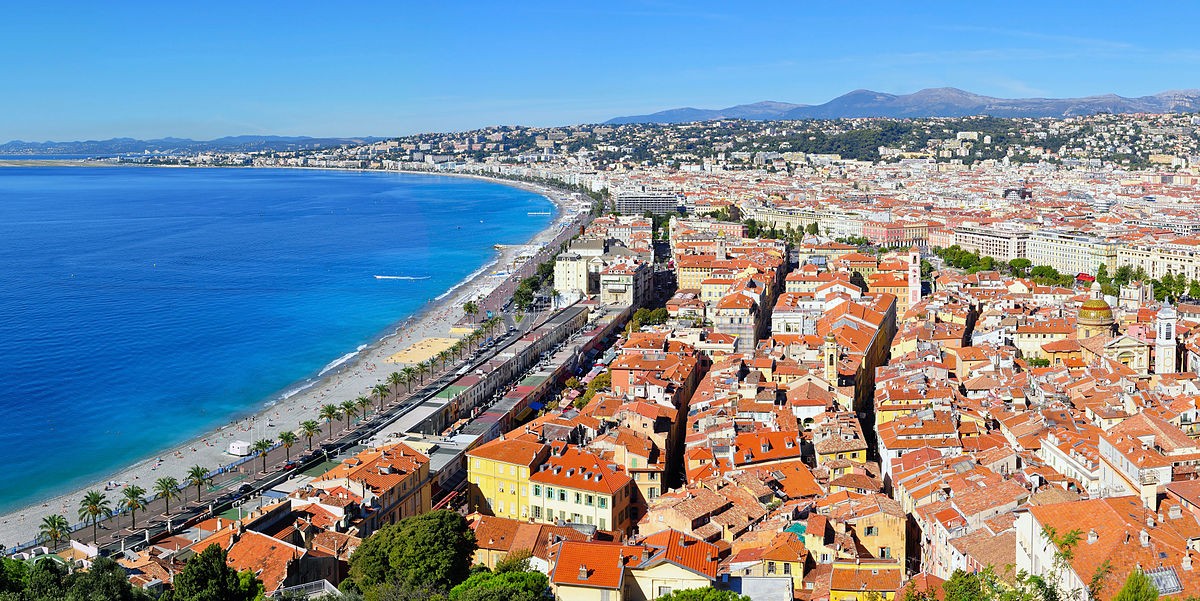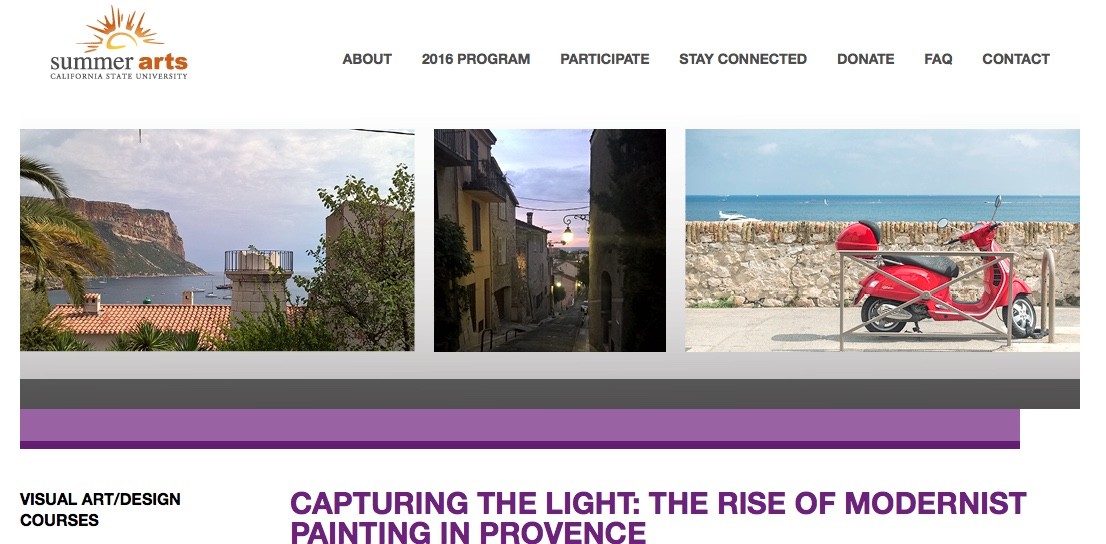
You’re 25 years old, studying abroad in a foreign country, and it’s that nation’s version of the Fourth of July. What better time to head to the beach, relax and watch some celebratory fireworks, right?
That’s what Britny Gledhill and about 15 other Cal State Long Beach students involved in a month-long arts program in the French city of Nice decided to do July 14. And relax and enjoy fireworks they did. Until one small corner of hell erupted.
Gledhill and friends were not among the nearly 90 (so far) people killed or more than 200 injured during the Bastille Day celebration, which was marred by the driver of a rampaging truck and subsequent shoot-out. But though they survived, the echoes are never too far away.
“Every time you’re walking around and hear any noise, like a [police] siren or ambulance, you really take notice,” says Gledhill, who lives in Brea. “It kind of stops your life for a second.”
“I’m much more observant when I walk into a Metro station,” says Gledhill’s fellow CSULB student, Louis Velasquez, 27, who is from Long Beach. “Just more cautious about whatever’s around. It’s a surreal feeling.”
The students are all part of a summer arts program sponsored by California State University Monterey Bay, “Capturing the Light: The Rise of Modernist Painting in Provence,” in which students from CSU campuses spend a month in the coastal Mediterranean city that has drawn artists from Renoir to Matisse. They had arrived in Nice four days before and were immediately struck by its beauty.
“The light is unreal, just beautiful,” Gledhill says. “It’s no wonder artists have been coming here forever.”
But that light was momentarily shattered by the truck assault.
At first, no one in their group had any idea what was going on. They were sitting on blankets, watching the fireworks spectacular, and a few were in the ocean, searching for some glasses that one member of the group had lost.
“As we were coming up the shore, we noticed people at a restaurant just a couple of feet away, running out and rushing down the street,” Velasquez said. “I didn’t register what was going on but I stopped one of the locals and asked if they spoke English and his girlfriend motioned to her head and said ‘bang,’ ‘bang,’ bang.’”
While a couple of members in the group took off in a panic, most hurriedly collected their stuff and decided to walk back to the apartment building they were all housed in.
“It was really hard to know what going on,” Velasquez says. “It was just a melee. There were just people running everywhere, holding their children, people talking into their cell phones, crying. We just knew that something wasn’t right and something bad was happening.”
“We didn’t know if there were multiple people with guns, or if there were bombs, or if someone was walking down the street with a machine-gun or what,” says Aliza J. Bejarano, 26, a San Clemente resident.
But, the group decided to walk as a cohesive unit, and chose to take side streets, since whatever was happening, they surmised, was going down on the main boulevard.

Velasquez took point, and managed to lead the group to its apartment building. It took maybe 15 or 20 minutes but, he says,“it seemed to take forever.”
Gledhill anchored the back, and made sure to tell the members of her group to hold someone else’s hand, so no one would get separated.
Yet, while confusion reigned all around them, there was a collective calmness within the group. “I wasn’t thinking about myself or about being scared,” Velasquez says. “I just realized there were so many us and we needed to get (home). It was like survival mode. Instinct took over I wasn’t processing my feelings.”
“It was like fight or flight,” Gledhill says. “It was like, ‘Ok, this is happening, but we don’t know what is happening.’ There was so much going on. But it was weird. I just felt like everyone would be safe as long as we hoofed it back from the beach.”
When they finally arrived at their apartment building, and Wi-Fi kicked in, cell phones exploded with texts, calls and emails from friends and family members back home. They called people to tell them they were OK.
“That was the longest 30 minutes or so of my life,” says Gledhill’s mother, Laura Mussche, who lives in Fullerton, and who had been frantically trying to contact her daughter immediately after a friend had phoned her and cryptically asked if she was OK. “Nothing in the world mattered more than hearing her voice.”
It was then that the enormity of what had transpired set in.
“I was on my phone, and I just kept seeing the body total add up, 12, 20, 40. It was like it was never going to stop,” says Bejarano.
Finally, after the two fellow students who had bolted earlier arrived, everyone huddled into Glendhill and Velasquez’s apartment, someone notified their French instructors that everyone was accounted for, and the group did what anyone in the midst of stress should do: they ate.
“I just started grabbing anything we had and set it on the table, “Gledhill says. “Someone made some pasta, there was taboullie and cheese and bread.”
“And pickles!” says Bejarano.
The group, like the entire section of the city, was on lockdown until the next morning, after which the entire study program met. Everyone was given the opportunity to leave the country and fly back home. All but one declined.
“I wasn’t going to leave,” Velasquez says “I knew that whoever or whatever was behind this, they want us to live in fear. And I wasn’t going to be scared or let them ruin this beautiful city. No way was I going to live like that.”
“If we did that every time something like happened, they would be winning,” Gledhill says “They can strike fear in us, but you can’t let that stop you. You have to go on living.”
“There are so many awful things going on and when you’re in the middle of it, you just have to keep going on in spite it,” Bejarano says. “You can’t put your life on pause for any of it. You just have to keep going.”
At the end of the month-long program, which finishes August 3, every student will submit a final art project. A sample of those works will be display at Santa Monica’s Bergamot Station. For these three students, they’re not sure if what they experienced will factor into their work or not.
“I think for sure it will,” says Bejarno. “It’s impossible to not let this [seep into her work] everything we’ve seen felt during and afterwards.”
“I don’t know,” says Gledhill. “I’m not sure if I’m ready to put in all in my work… But this experience has definitely burned itself into the back of my mind.” http://blogs.calstate.edu/summerarts/courses/the-rise-of-modernist-painting-in-provence/ ,

